Physical Address
304 North Cardinal St.
Dorchester Center, MA 02124
Despite improvements in advanced imaging techniques, clinical examination of the knee remains an essential step in evaluating the knee patient. Evaluation of every patient should begin with a complete history of the symptoms and a full description of the mechanism of injury. Often, the history will direct the examiner to the area of knee involvement. This will sharpen the physical examination, result in a more accurate diagnosis, and allow the clinician to be more proficient.
The examination should begin with observation of the patient's gait, which provides critical information. The examiner should note the patient's ability to ambulate, the use of gait aids, the speed of ambulation, and the amount of discomfort present with attempted ambulation. Evaluation of the gait pattern and the stance position of the lower limb is performed while the patient ambulates. A shortened stance phase of gait (antalgic gait) will confirm the side of involvement. A short leg gait requires confirmation of limb length. This may be accompanied by a significant varus or valgus deformity at the knee or may represent an extra-articular deformity requiring further evaluation. Varus or valgus alignment should be noted, as well as any medial or lateral thrust in the stance phase of gait ( Fig. 3.1 ). The clinical alignment of the lower part of the leg (anatomic axis) measures the femorotibial angle ( Fig. 3.2 ) and is different from the mechanical axis of the limb ( Fig. 3.3 ), as measured from the femoral head through the knee to the center of the ankle on a standing roentgenogram. With a goniometer applied to the anterior aspect of the thigh and the lower part of the leg and centered on the patella, the examiner can report the clinical varus or valgus alignment. This measurement should be used along with the roentgenographic measurements.
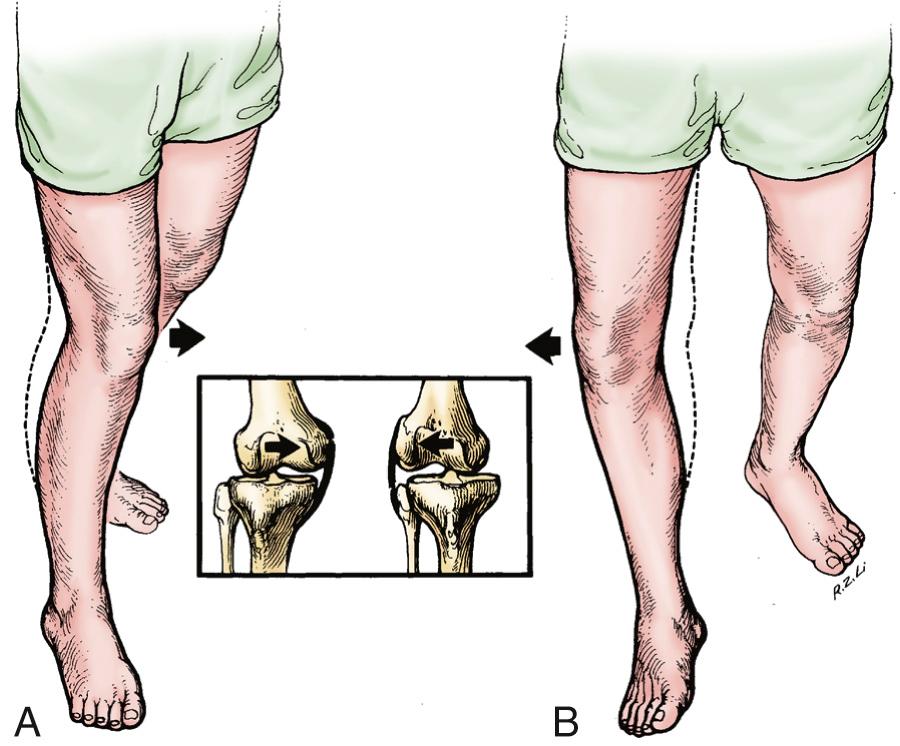
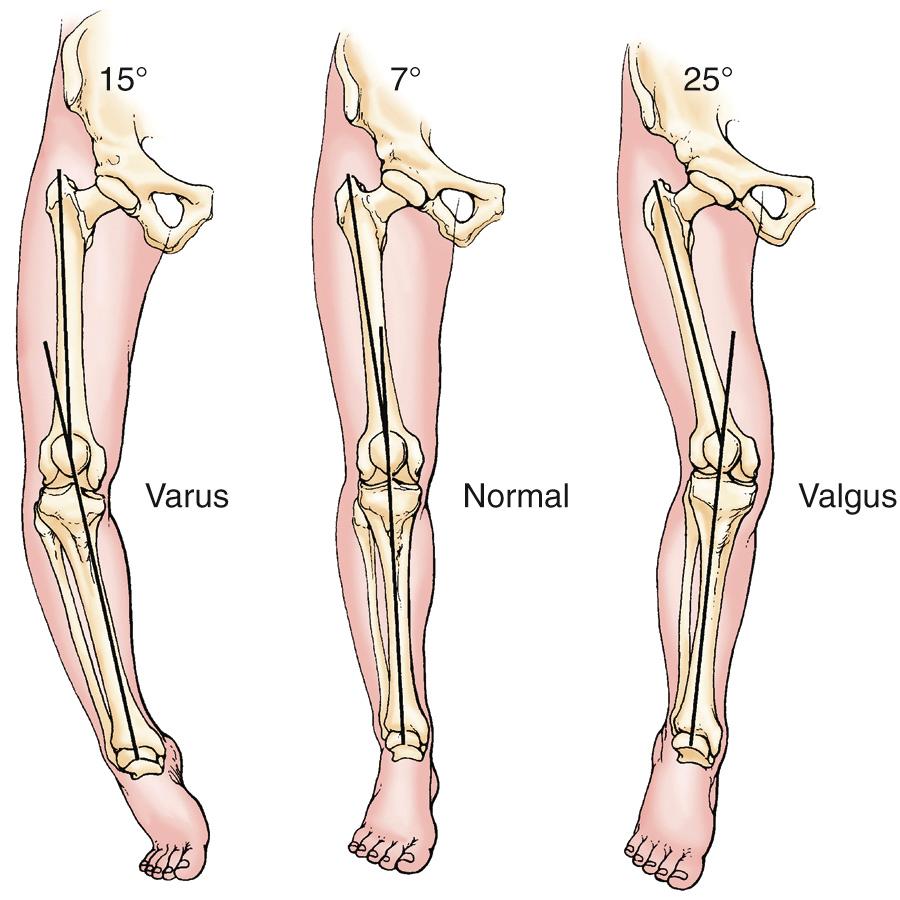
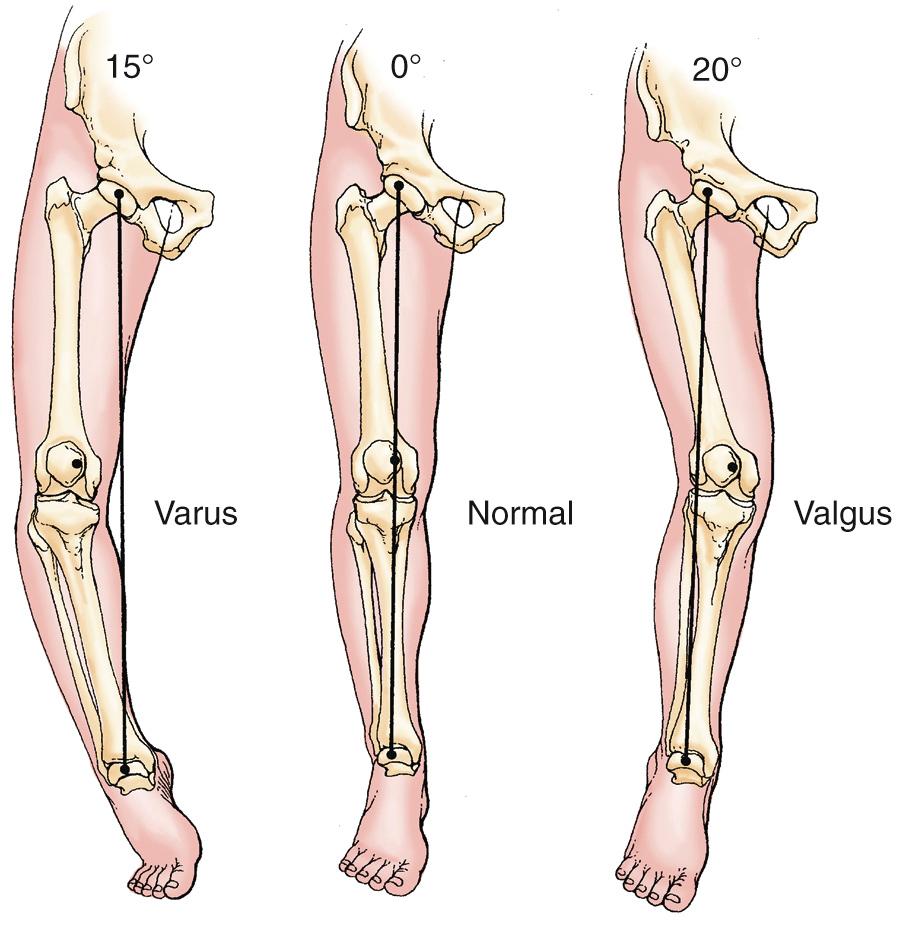
Patellar alignment must also be observed. It is influenced by femoral neck anteversion, tibial torsion, the anatomy of the individual patellar facets, and the depth and angle of the femoral sulcus ( Fig. 3.4 ). The Q angle is drawn from the middle of the tibial tubercle to the middle of the patella and then to the anterior superior iliac spine of the pelvis. The normal angle is 10 to 20 degrees.
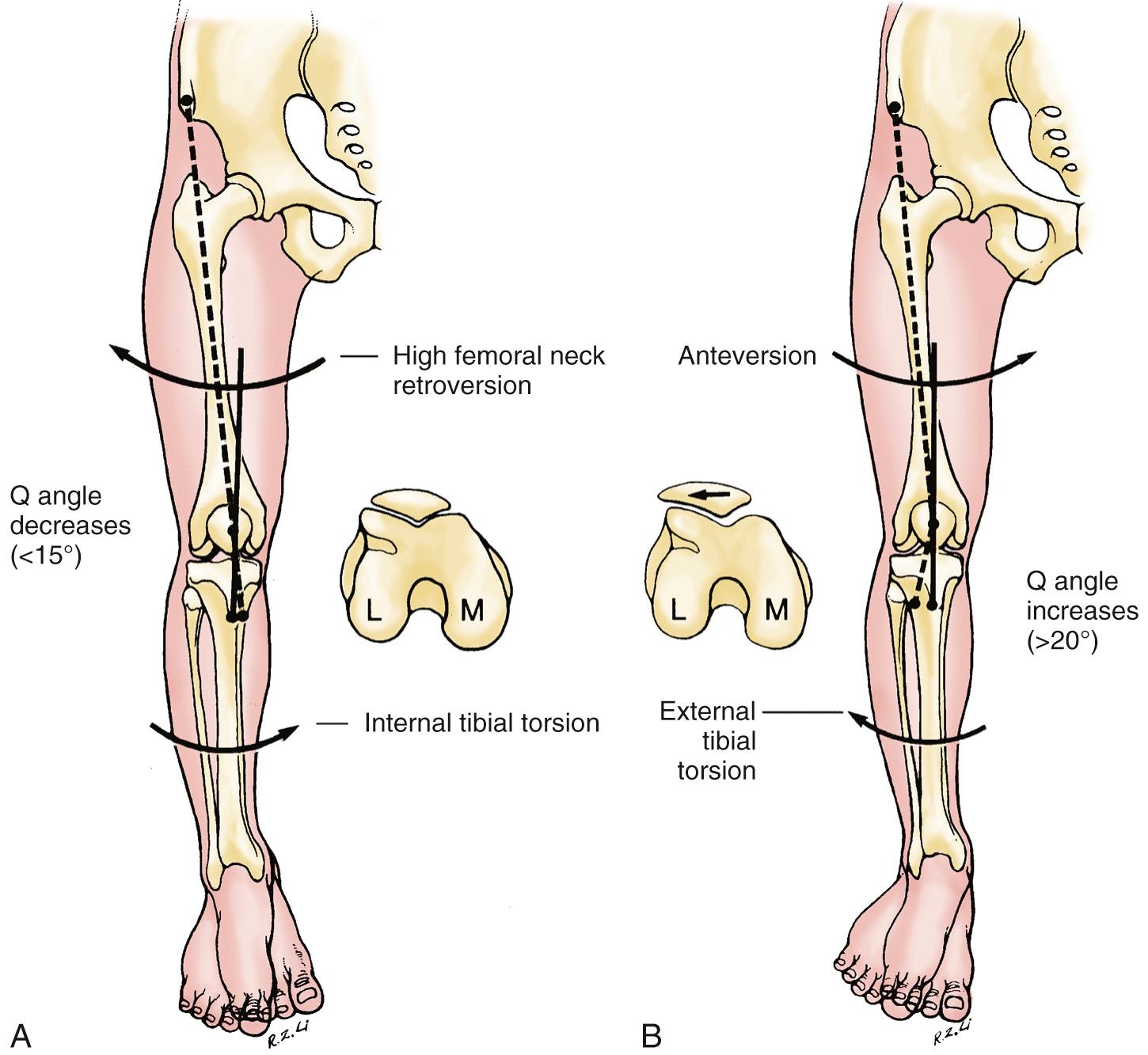
Clinical effusion may be apparent visually. Active range of motion should be recorded, along with any limitations to full extension or flexion. Active range of motion will be further evaluated with palpation and should be compared with passive range of motion of the knee ( Fig. 3.5 ). It is customary that full extension should be considered 0 degrees, and flexion is recorded as an increasing number or as the distance of the heel of the foot from the buttocks. An inability to fully extend may represent lag, a locked knee, or a flexion contracture. An inability to fully flex may be because of an effusion, pain, or extension contracture.
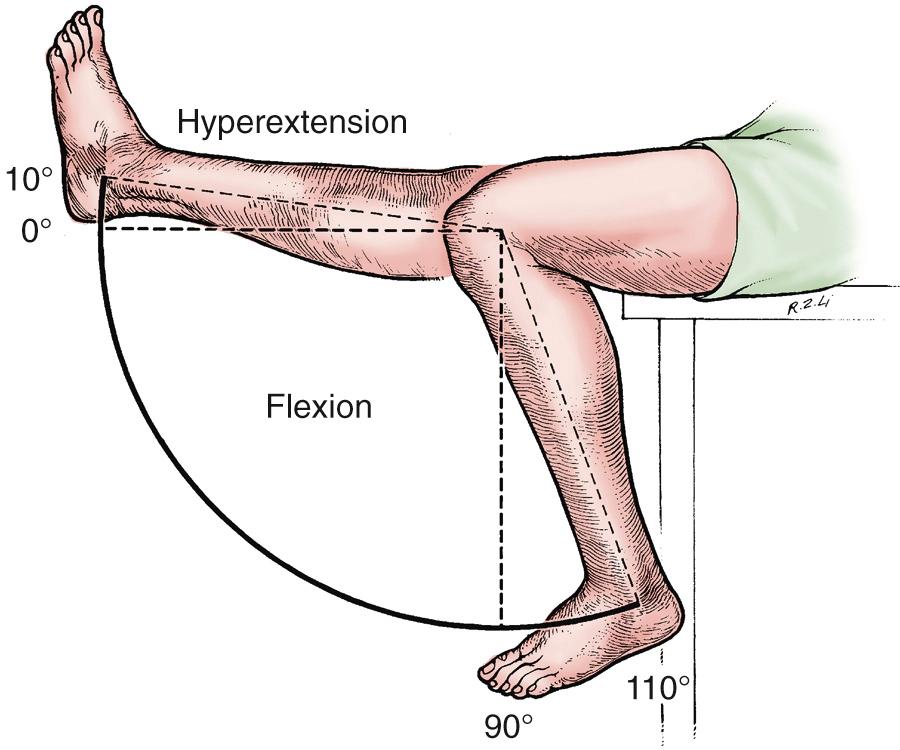
Quadriceps atrophy is sometimes visually apparent and can help confirm the involved side. The gross appearance of quadriceps atrophy should lead to further investigation with circumferential measurement during the palpation phase of the physical examination.
Become a Clinical Tree membership for Full access and enjoy Unlimited articles
If you are a member. Log in here